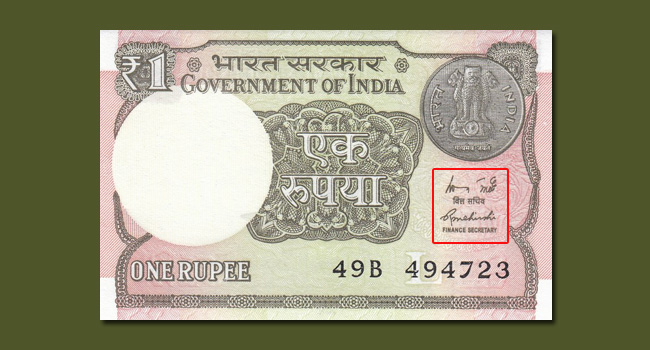Banknotes v/s Currency notes
2017-01-04 Wed
Banknotes Vs Currency Notes Thought bank notes and currency notes are synonymous?Well... here’s a little eye-opener, banknotes and currency notes are not actually same, though they serve same purposes in the monetary system of a country!
Shocked? Worry not; let’s study them in detail.
What are Banknotes?
The banknote is a type of negotiable instrument known as a promissory note, made by a bank and guaranteed by Central Government, payable to the bearer on demand or a piece of paper money, constituting a central bank's promissory note to pay a stated sum to the bearer on demand.
Basically, in simple language, the banknote is a term used for a note (paper money) issued by the central bank of a nation with a guarantee or a promise to pay the amount specified on the face of the note. Therefore in case of India, the notes issued by the Reserve Bank of India (RBI) are bank notes.
Types of Banknotes

a) On Demand: The banknotes issued by RBI before 1970 have a clause by the RBI stating "I Promise to pay the bearer ON DEMAND the sum of rupees ___".
b) Promissory Note: Indian Banknotes issued by RBI from 1970 changed this clause to "I PROMISE to pay the bearer the sum of ___ rupees".
Difference Between Banknotes and Currency Notes

So in India, INR 1 notes are currency notes issued under the authority of the Government of India while the notes of other denominations of INR 2, 5, 10, 20, 50, 100 and 2000 are banknotes issued by RBI. The notes issued by the Government of India, i.e. the currency notes have the signature of the secretary of Finance Ministry and the banknotes issued by RBI have the RBI Governor's signature.
While both serve the common purpose in day to day transactions they are fundamentally different. Both are legal tenders and can be used for buying and selling.
Hope this article helped you in understanding your currency better!
Happy collecting!
Latest News
-
Agra Mint of Muhammad Akbar
2024-04-30 TueAla al-Din Masud Shah was the ruler of the Delhi Sultanate from 1242 CE to 1246 CE (AH 639-644). Dur...
-
Raja Ravi Varma
2024-04-29 MonOn 29th April 1848 Raja Ravi Varma, a famous classical painter, and great Indian Artist, was born in...
-
Panchala King Bhanumitra Copper Coin
2024-04-26 FriThe Panchala kingdom was ruled by the Mitra kings. The Mitra kings are known to issue coins and most...
-
Mahatma
2024-04-25 ThuIndia Post issued a commemorative postage stamp on #LalaHansraj, also known as Mahatma Hansraj for�...
-
Berar Mint of Muhammad Akbar
2024-04-25 ThuBerar was a kingdom located in the Deccan region, with Elichpur as its capital. It was one of the Su...

